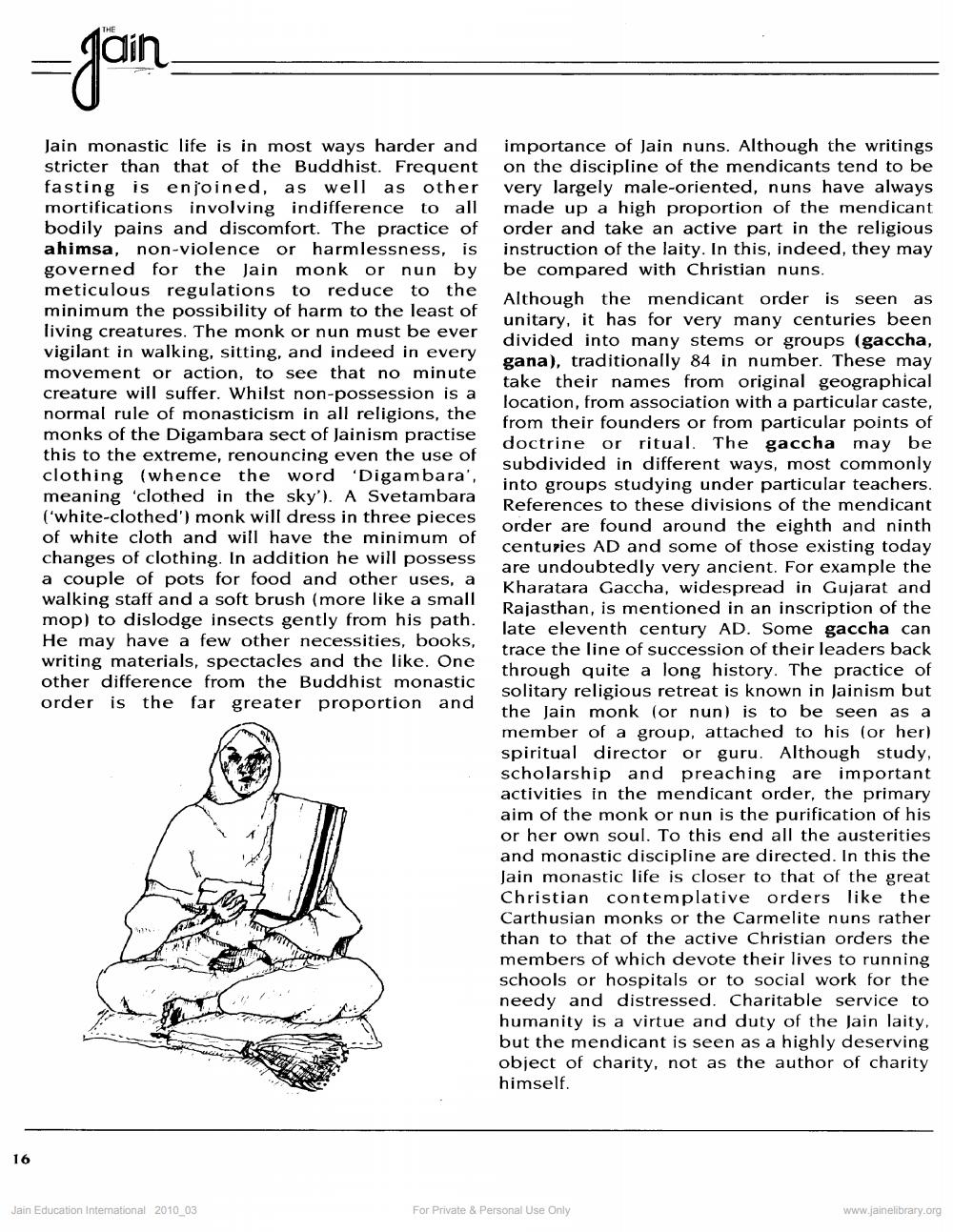________________
THE
=Jain
16
Jain monastic life is in most ways harder and stricter than that of the Buddhist. Frequent fasting is enjoined, as well as other mortifications involving indifference to all bodily pains and discomfort. The practice of ahimsa, non-violence or harmlessness, is governed for the Jain monk or nun by meticulous regulations to reduce to the minimum the possibility of harm to the least of living creatures. The monk or nun must be ever vigilant in walking, sitting, and indeed in every movement or action, to see that no minute creature will suffer. Whilst non-possession is a normal rule of monasticism in all religions, the monks of the Digambara sect of Jainism practise this to the extreme, renouncing even the use of clothing (whence the word 'Digambara', meaning 'clothed in the sky'). A Svetambara ('white-clothed') monk will dress in three pieces of white cloth and will have the minimum of changes of clothing. In addition he will possess a couple of pots for food and other uses, a walking staff and a soft brush (more like a small mop) to dislodge insects gently from his path. He may have a few other necessities, books, writing materials, spectacles and the like. One other difference from the Buddhist monastic order is the far greater proportion and
Jain Education International 2010_03
importance of Jain nuns. Although the writings on the discipline of the mendicants tend to be very largely male-oriented, nuns have always made up a high proportion of the mendicant order and take an active part in the religious instruction of the laity. In this, indeed, they may be compared with Christian nuns.
Although the mendicant order is seen as unitary, it has for very many centuries been divided into many stems or groups (gaccha, gana), traditionally 84 in number. These may take their names from original geographical location, from association with a particular caste, from their founders or from particular points of doctrine or ritual. The gaccha may be subdivided in different ways, most commonly into groups studying under particular teachers. References to these divisions of the mendicant order are found around the eighth and ninth centuries AD and some of those existing today are undoubtedly very ancient. For example the Kharatara Gaccha, widespread in Gujarat and Rajasthan, is mentioned in an inscription of the late eleventh century AD. Some gaccha can trace the line of succession of their leaders back through quite a long history. The practice of solitary religious retreat is known in Jainism but the Jain monk (or nun) is to be seen as a member of a group, attached to his (or her) spiritual director or guru. Although study, scholarship and preaching are important activities in the mendicant order, the primary aim of the monk or nun is the purification of his or her own soul. To this end all the austerities and monastic discipline are directed. In this the Jain monastic life is closer to that of the great Christian contemplative orders like the Carthusian monks or the Carmelite nuns rather than to that of the active Christian orders the members of which devote their lives to running schools or hospitals or to social work for the needy and distressed. Charitable service to humanity is a virtue and duty of the Jain laity, but the mendicant is seen as a highly deserving object of charity, not as the author of charity himself.
For Private & Personal Use Only
www.jainelibrary.org




